In this age of information, the secret to success lies in data—large quantities of it.
Data is everywhere. Your customers leave behind trails of information with every query, every click, and every purchase they make—and all you have to do is tap into this valuable resource.
This is where marketing analytics comes in.
What is Marketing Analytics?
Marketing analytics is the process of finding useful patterns in data to inform marketing decisions. It’s a complex process involving the use of modern technologies such as machine learning, data mining, and predictive analytics to uncover trends and extract insights that you need to optimize your marketing activities.
What Information is Collected?
Using marketing analytics is like putting your business under the microscope. You get to see what’s really happening beneath the surface (and get to the bottom of it). It reveals two critical things—how your customers are behaving and how well your marketing efforts are performing.
In this age, it’s not enough to rely on pure intuition to find out what’s working and what’s not. You need data—and lots of it—to understand your customers on a granular level and to determine how you can improve performance in the most cost-effective ways possible.
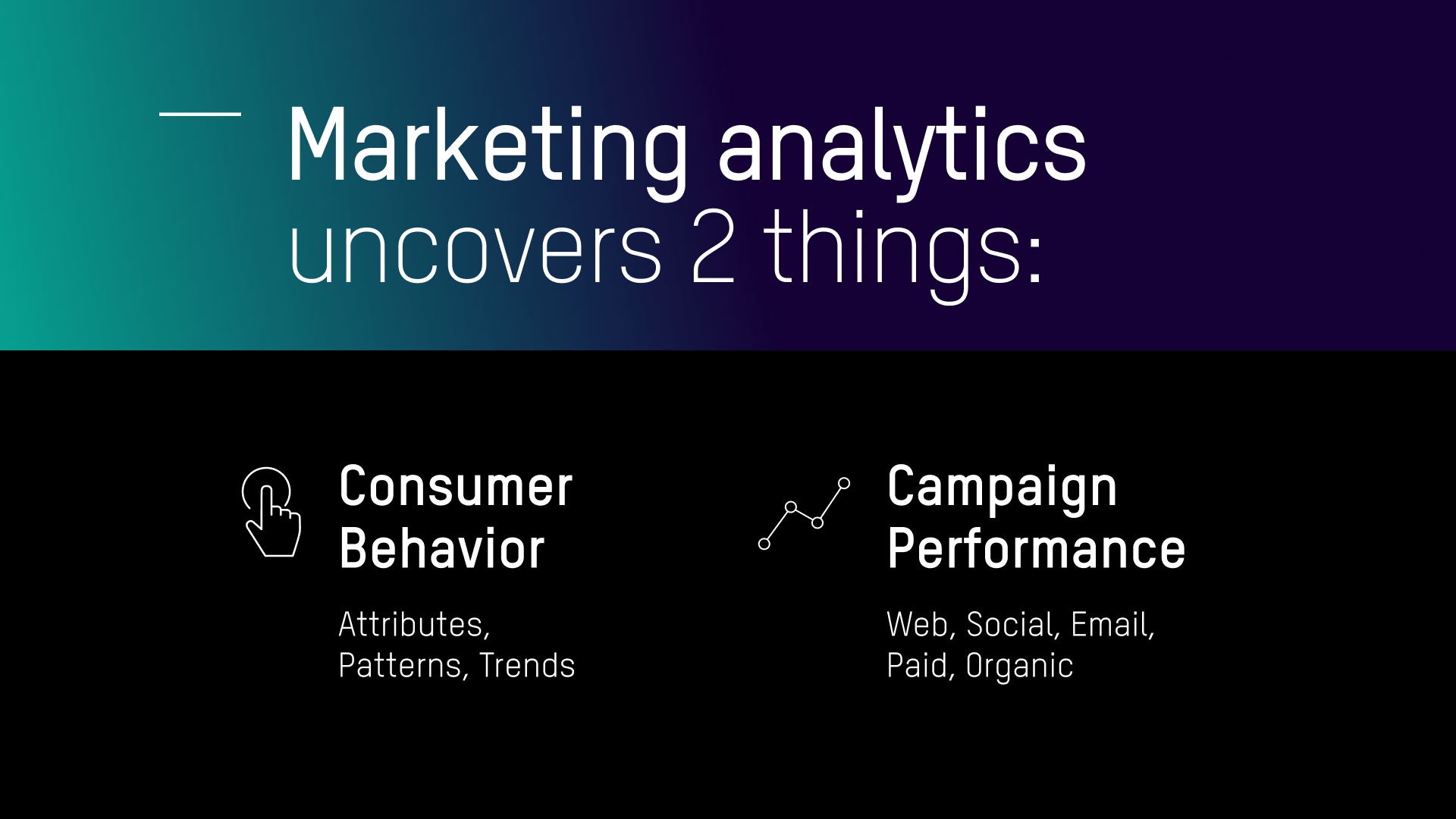
Where Is Data Collected?
In marketing analytics, data is collected from multiple sources such as websites, email, social, organic, and paid media—oftentimes, simultaneously. This can make managing data a bit overwhelming, so using a variety of specialized tools and programs is a must.
Marketers use different technologies depending on the channels they’re tracking. Here are the top solutions that most marketers use when integrating analytics into their processes:
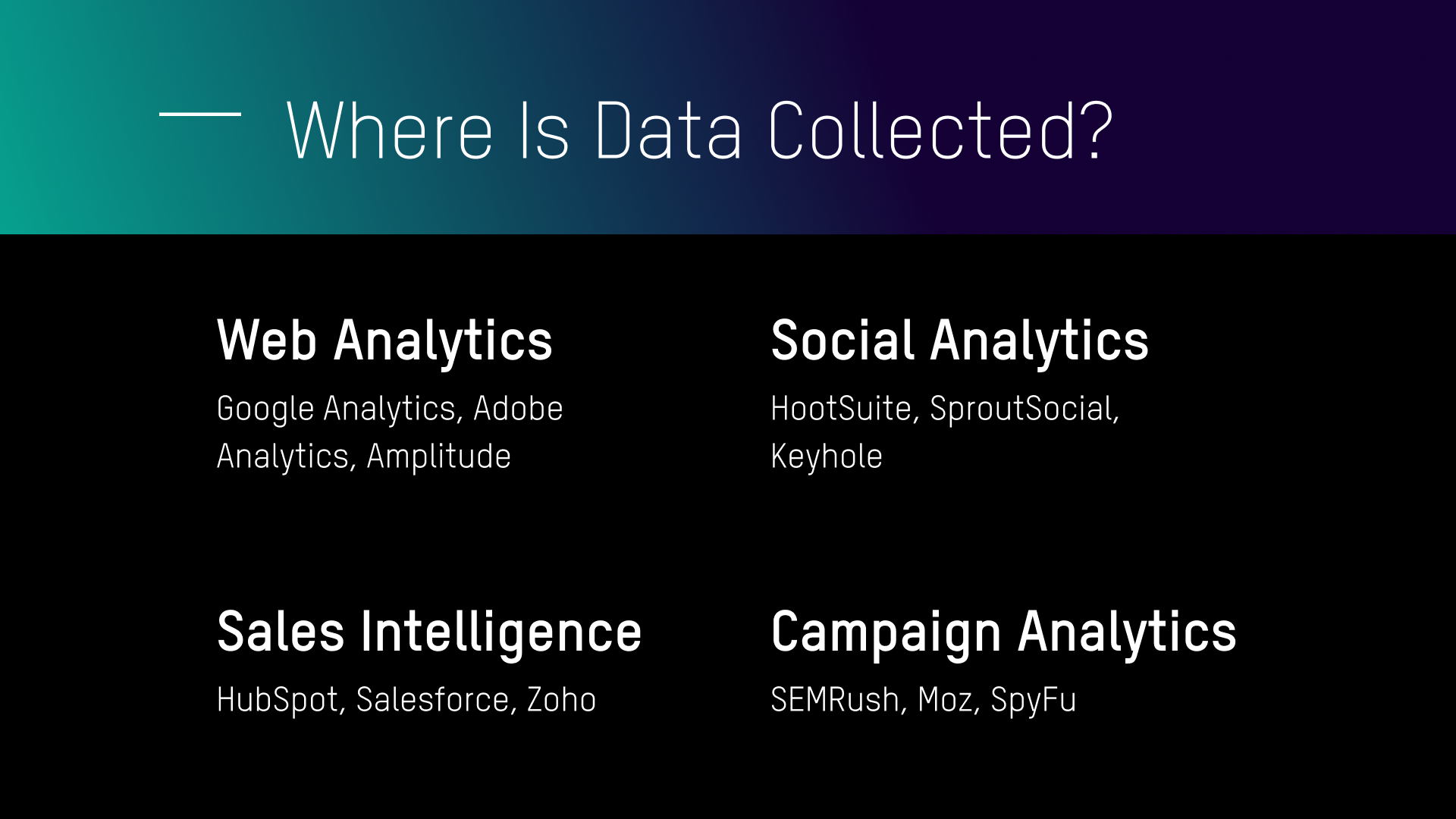
How is Data Collected?
Gathering data is just the start. After the process of collecting comes a series of compiling, analyzing, and reporting. For raw data to be transformed into actionable insights, it must undergo three fundamental steps: data aggregation, data unification, and data visualization. Each step requires the use of specific technologies to generate tangible, useful results that can be integrated into your strategies.
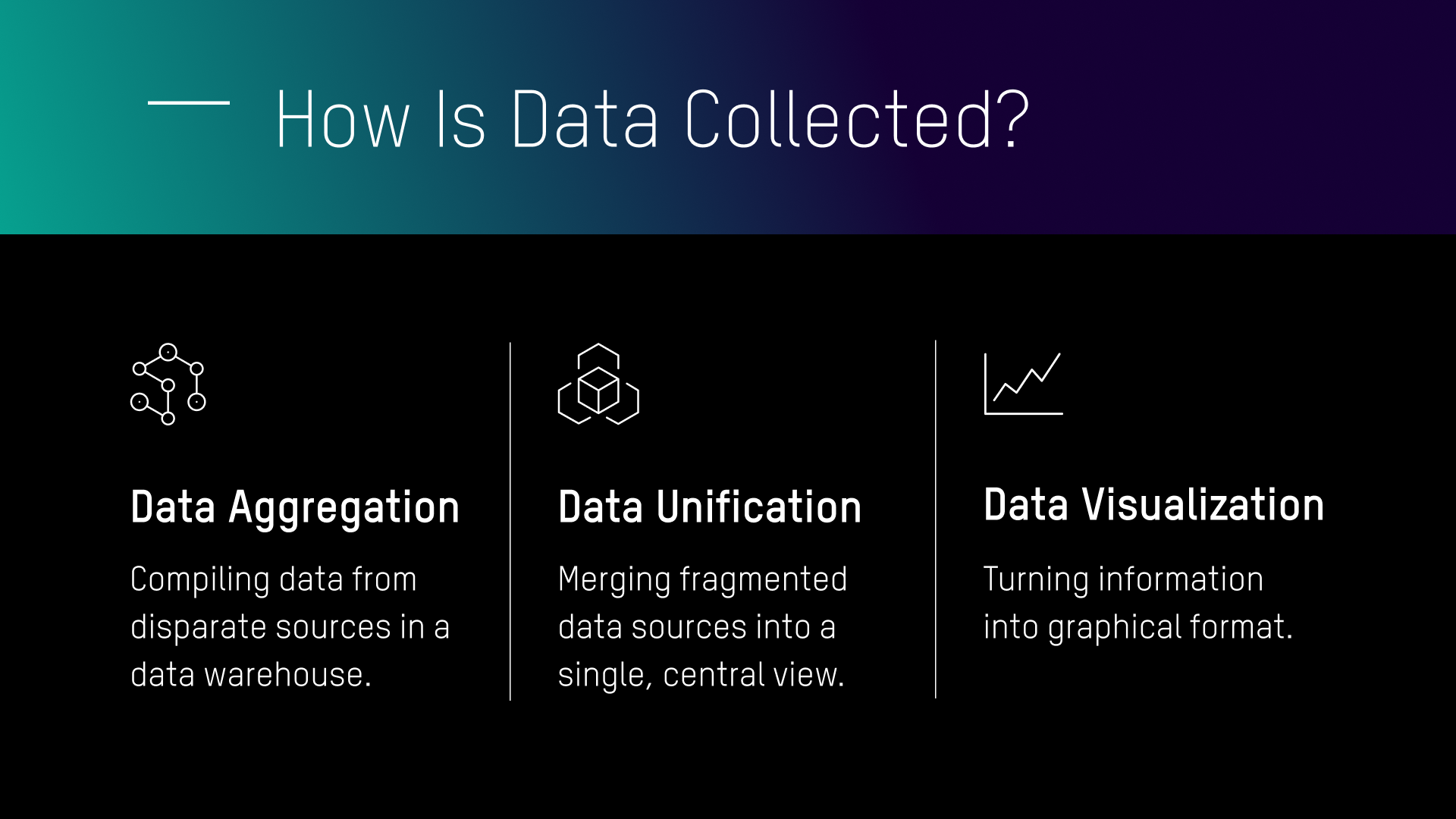
What Are The Categories?
Data is categorized based on where it came from. In marketing analytics, there are three basic data types: first-party (data that can be produced from your own machineries—the most ideal route to go); second-party (data purchased from a partner); and third-party (data acquired from an external source).
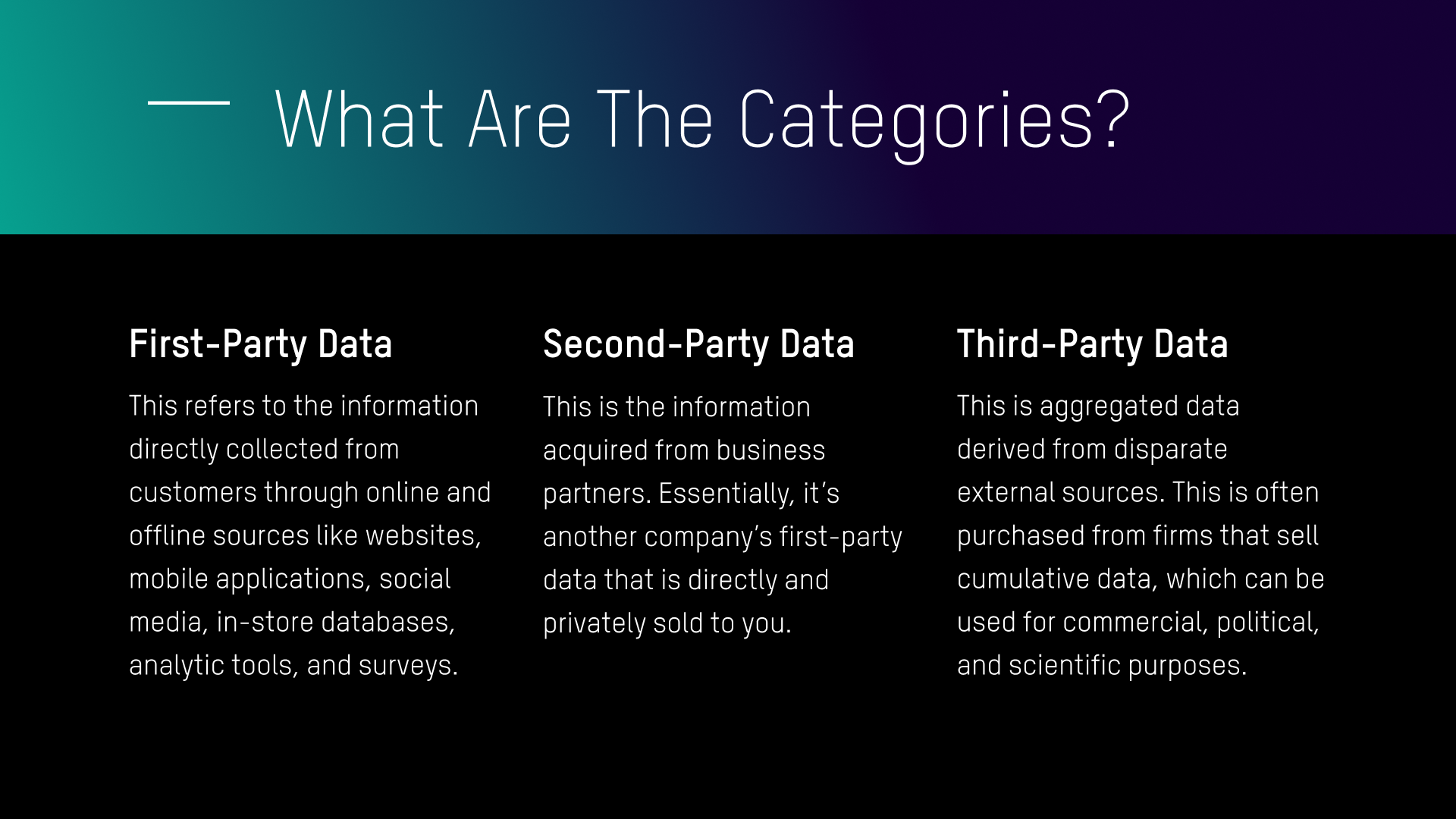
Why Does It Matter?
The truth is, you need data to get ahead. Organizations often make smarter decisions when they’re backed by data. That’s why large corporations in particular leverage data to drive their businesses forward. So just how advantageous is marketing analytics?
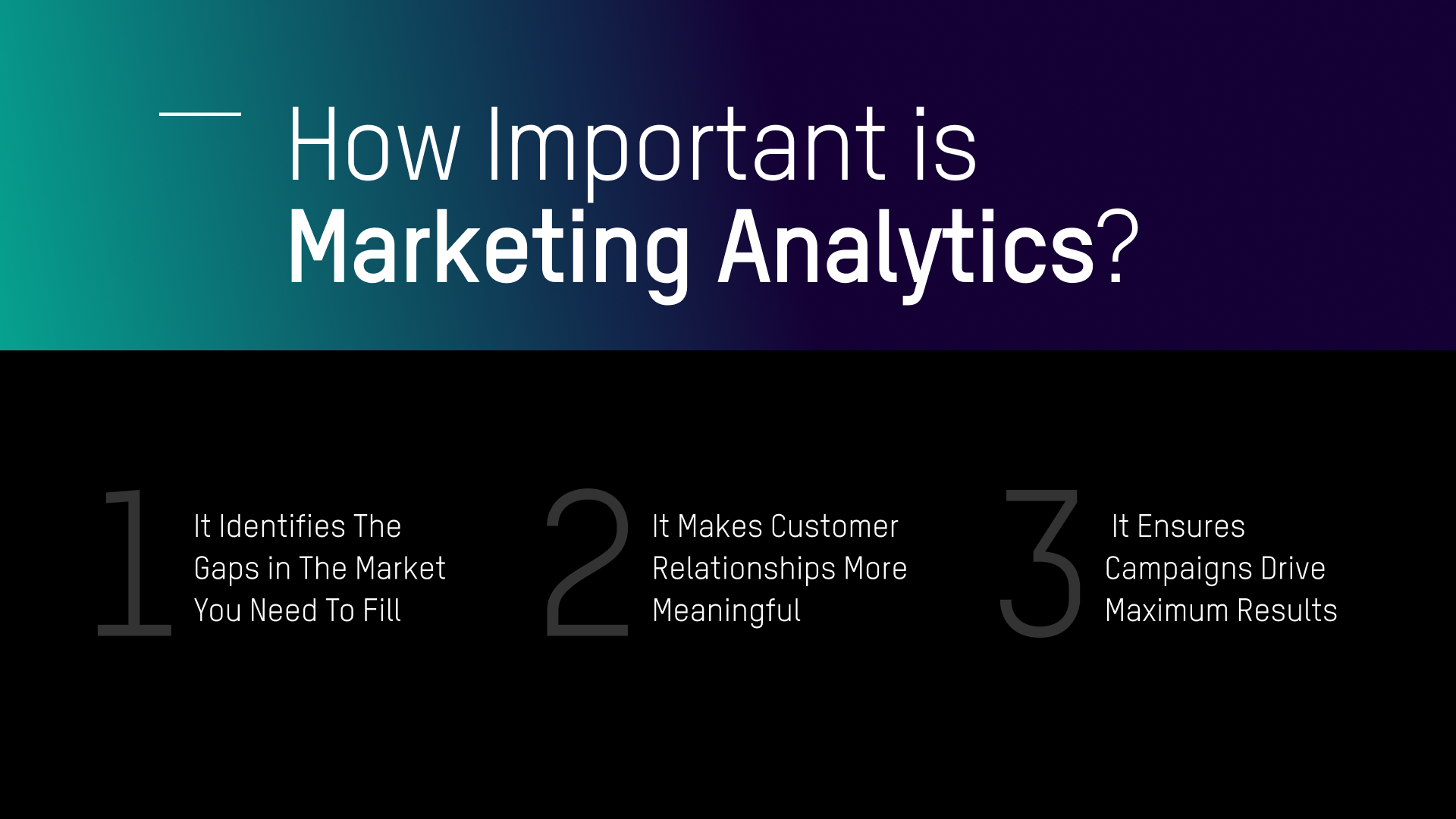
It Identifies The Gaps in The Market You Need To Fill
It’s hard to know exactly what customers want without the use of data. Marketing analytics reveals valuable insights that can illuminate the needs and wants of your consumers, from their purchasing patterns and product preferences to their buying motives and pain points. It basically helps you discover the most effective ways to cater to their always-evolving and ever-changing needs.
It Makes Customer Relationships More Meaningful
The key to a meaningful—and lasting—customer relationship lies in data. Why so? It helps you identify what your customers want so you can deliver precisely that. Through marketing analytics, you can segment your audience, tailor your messaging, and create personalized, immersive, and memorable experiences for your customers. The desired result? Increased engagement and improved retention.
It Ensures Campaigns Drive Maximum Results
In a landscape as competitive as digital, data is your lens to see clearly. Through analytics, you get to find out what’s working and what’s not. You can discover the strengths and weaknesses of your campaigns and use these insights to improve your marketing efforts. If you want to make sure no dollar goes to waste, then analytics is vital.



